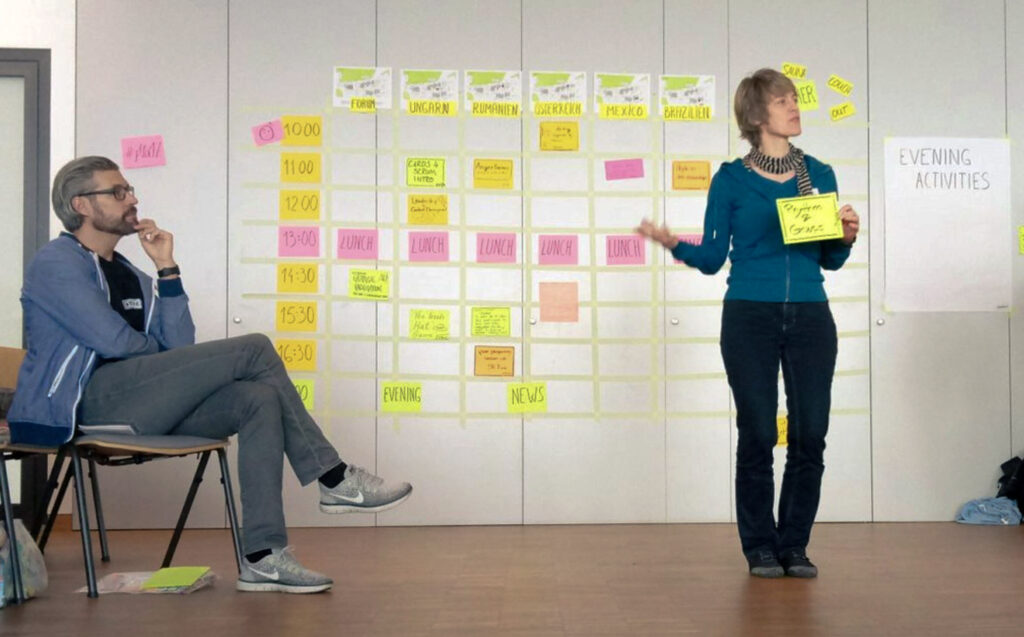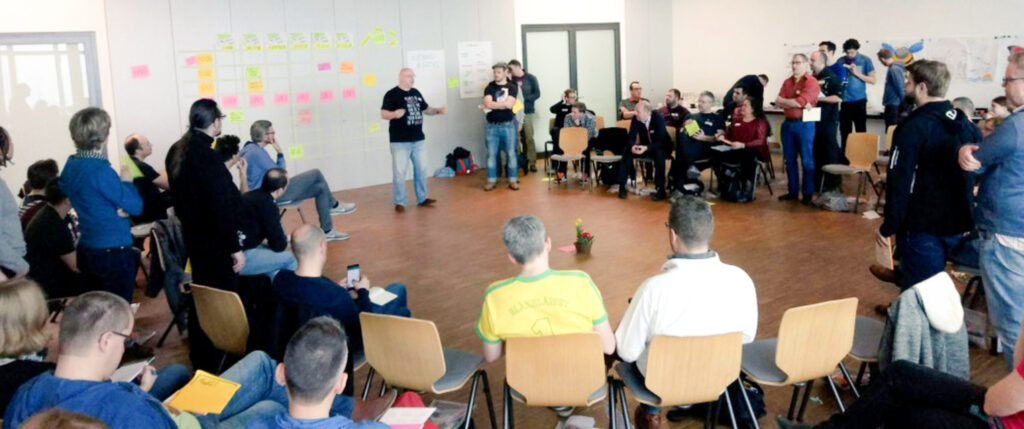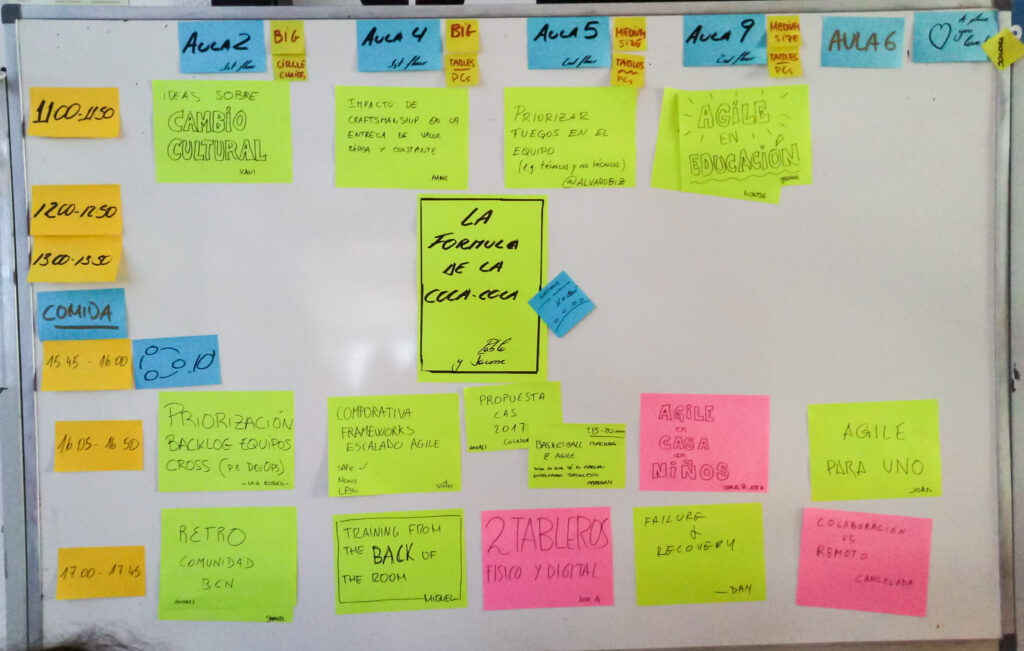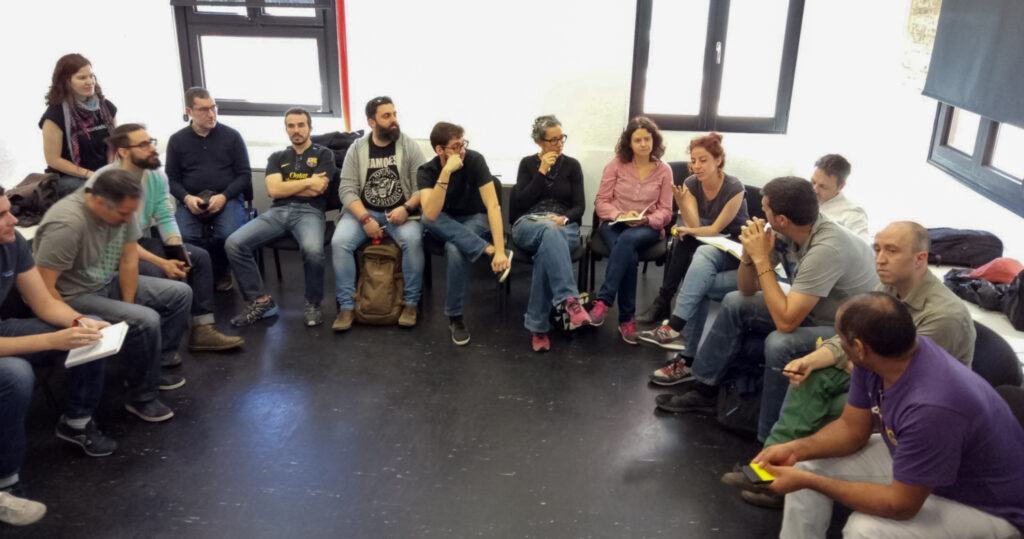For those who have never attended an Open Space event, it is an “unconference“, a set of talks given by the event attendees themselves, so that everyone becomes both a “producer” and “consumer” of the content covered. There is no previous schedule since it is created collaboratively at the beginning of the event.
A different format which may seem innovative, but it was designed more than 30 years ago, and since then, it is estimated that more than 100,000 Open Spaces have been organized worldwide. Its creator, Harrison Owen, summarized the characteristics of this format in 1993 in his book Open Space Technology: A User’s Guide.
In general terms, the most common agenda format for an Open Space is as follows:

For example, in this photo, we can see the moment of proposing sessions at the Play4Agile event, held annually in Germany. You can see the two rows of people waiting their turn to propose a session on both sides of the semicircle.

This is what the grid looked like at an Open Space held at Netmind with the Agile community:

Four principles and one law govern open Spaces, which are the following:
The Law of Two Feet, also known as the Law of Mobility, states that anyone has the freedom to move from one group to another at any given time during the event.
If, at any time, a person is in a group where he or she is not able to learn or contribute or is not having fun, he or she is responsible for using his or her two feet to move to another group where he or she believes he or she can.
The fundamentals for an Open Space to work are Passion and Responsibility.
Passion is precisely what moves us to participate, contribute, propose topics, learn, and collaborate. Without passion, there is no interest.
Responsibility, because what makes this format work is the responsibility of everyone who participates. Without commitment, nothing works.
Netmind has hosted Open Spaces organized by the Agile Spain Barcelona Community or the Barcelona Software Crafters on several occasions. We were also involved in the first online Open Space held in May 2020.
In the process of organizational change in which a learning culture is promoted, we recommend holding events in Open Space format.
The decentralization of the chosen contents, the delegation and trust in the attendees and in the topics to be discussed, the energy generated during the sessions, the hallway conversations that end up being more interesting than some of the talks are characteristics of this type of event, fully aligned with what we understand should be an organization that wants to promote continuous improvement, people development and organizational learning.
Experiencing an Open Space is very different from reading the explanation of an Open Space. If you have never experienced one, I recommend that you do. Search Meetup to find out when the next one will be, sign up, experience it, and share it.
An Open Space is a powerful tool to lead a change in an organization toward a learning culture. At Netmind, we have held internal Open Spaces, and the experience could not have been better. We recommend it 100%.

© Copyright 2023. Netmind. All rights reserved.
Por favor, proporciona la siguiente información para ayudarnos a personalizar la solución.
Netmind España
Barcelona +34 933 041 720
Madrid +34 914 427 703
Nos puedes encontrar de:
Lunes – Viernes, 9:00-18:00 (GMT+1)
¡Te ayudamos!
info@netmind.net
¿Dudas sobre servicios/formaciones?
comercial@netmind.es